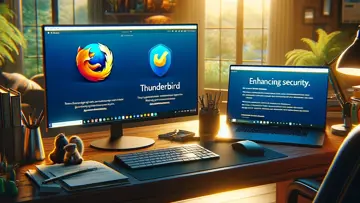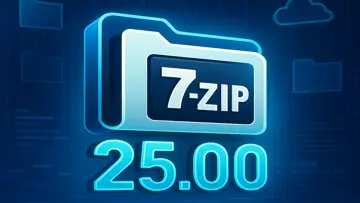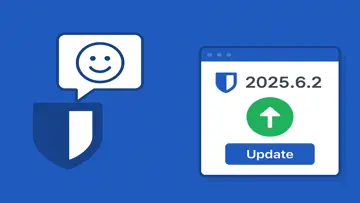PostGIS: Transforming PostgreSQL into a Spatial Database Powerhouse
PostGIS extends PostgreSQL to enable efficient geographic object management, making it a must-have for any geospatial application.
PostGIS by Paul Ramsey is a free and open-source software application that adds support for geographic objects to the PostgreSQL object-relational database. It allows users to store and query spatial data using SQL, making it a powerful tool for location-based applications and geographic information systems.
With PostGIS, users can create and manipulate spatial data such as points, lines, and polygons. The application provides a wide range of functions for spatial analysis, including distance calculations, area calculations, and geometric operations.
PostGIS is widely used in a variety of industries, including urban planning, environmental science, and transportation. Its ability to handle complex spatial queries makes it a valuable tool for organizations dealing with large volumes of geographic data.
One of the key features of PostGIS is its compatibility with the OGC (Open Geospatial Consortium) standards. This ensures that spatial data stored in PostGIS can be easily shared and accessed by other GIS applications that support the same standards.
PostGIS also integrates seamlessly with other open-source geospatial tools, such as QGIS and GeoServer, allowing users to build comprehensive GIS workflows using a combination of different applications.
PostGIS by Paul Ramsey is a versatile and powerful tool for anyone working with spatial data in a PostgreSQL environment. Its ease of use, extensive functionality, and compatibility with industry standards make it a top choice for GIS professionals around the world.
Overview
PostGIS is a Open Source software in the category Business developed by Paul Ramsey.
The latest version of PostGIS is 1.3.2, released on 02/18/2008. It was initially added to our database on 08/24/2007.
PostGIS runs on the following operating systems: Windows.
PostGIS has not been rated by our users yet.
Pros
- PostGIS is a free and open-source software application, which means there are no licensing costs associated with its use.
- PostGIS is a powerful extension to the PostgreSQL database system, adding support for geographic objects and functions which makes it well-suited for storing and querying spatial data.
- It allows for the storage and querying of spatial data types such as points, lines, polygons, multi-linestrings, multi-polygons, and others.
- PostGIS provides a wide range of functions for spatial analysis, including buffering, distance calculation, intersection, union, and many more.
- It offers robust support for geospatial indexes which can help improve query performance on spatial datasets.
- PostGIS integrates well with other GIS software and tools, making it a versatile choice for projects that require interoperability with different systems.
- There is an active community around PostGIS that provides support, tutorials, and extensions to enhance its functionality.
Cons
- PostGIS may have a steeper learning curve for those who are new to geospatial databases or SQL queries involving spatial data.
- As an extension to PostgreSQL, deploying PostGIS requires knowledge of setting up and managing a PostgreSQL database environment.
- Performance optimization for spatial queries may require fine-tuning of indexes and query strategies by users who are not familiar with spatial database concepts.
FAQ
What is PostGIS?
PostGIS is an open-source software program that adds support for geographic objects to the PostgreSQL object-relational database.
What are the main features of PostGIS?
PostGIS enables storage, manipulation, and analysis of spatial data. It provides functions and indexes for spatially-enabled objects, supports advanced spatial queries, and integrates with other PostgreSQL extensions.
How do I install PostGIS?
PostGIS can be installed as an extension to PostgreSQL. Users can enable it by running 'CREATE EXTENSION postgis;' in their database.
What are some common use cases for PostGIS?
Some common applications of PostGIS include GIS data management, location-based services, geospatial analysis, and cartographic rendering.
What spatial data types does PostGIS support?
PostGIS supports various geometric and geographic data types such as points, lines, polygons, multi-points, multi-lines, multi-polygons, and more. It also provides a wide range of spatial functions and operators for these types.
Can I import existing spatial data into PostGIS?
Yes, PostGIS supports importing data from various formats such as shapefiles, KML, GeoJSON, and more. The data can be loaded using tools like ogr2ogr or through the PostgreSQL COPY command.
Does PostGIS support spatial indexing?
Yes, PostGIS provides spatial indexes that enhance the performance of spatial queries by accelerating spatial data retrieval based on proximity and relationships.
Can I integrate PostGIS with web mapping applications?
Yes, PostGIS can be integrated with web mapping libraries such as Leaflet or OpenLayers to build interactive maps and geospatial applications leveraging the power of PostGIS for data storage and analysis.
What resources are available for learning PostGIS?
There are multiple resources available, including official documentation, online tutorials, books, and active user communities. The official PostGIS website is a good starting point.
Does PostGIS support 3D and 4D data?
Yes, PostGIS provides support for three-dimensional (3D) and four-dimensional (4D) geometries, enabling storage and analysis of spatial data that includes elevation or time components.

Minh Ong
I'm Minh, a software engineer and author with a passion for exploring and writing about the latest in software and technology. With my experience in software development and a specialization in software updates and content creation, I bring a deep understanding of the tech landscape to my reviews and articles. My focus is on providing you with comprehensive insights into general software topics and the latest industry news.
Latest Reviews by Minh Ong
Latest Reviews
|
|
Intel(R) Dynamic Tuning Technology
Intel's Dynamic Tuning Technology Optimizes Performance and Efficiency |
|
Native Instruments Una Corda
Native Instruments Una Corda: A Unique Sample Library for Soft Piano Tones |
|
|
Hybrid Mark Knight Expansion
Hybrid Mark Knight Expansion by AIR Music Tech GmbH Review |
|
|
Helper-Equalizer
Helper-Equalizer: Versatile Audio Tool for Custom Sound Tuning |
|
|
Helper-Saturator
Helper-Saturator: A Promising Tool for Saturation Enhancement |
|
|
Ravage Lite
Ravage Lite: A Lightweight Audio Enhancement App |
|
|
UpdateStar Premium Edition
Keeping Your Software Updated Has Never Been Easier with UpdateStar Premium Edition! |
|
|
Microsoft Edge
A New Standard in Web Browsing |
|
|
Google Chrome
Fast and Versatile Web Browser |
|
|
Microsoft Visual C++ 2015 Redistributable Package
Boost your system performance with Microsoft Visual C++ 2015 Redistributable Package! |
|
|
Microsoft Visual C++ 2010 Redistributable
Essential Component for Running Visual C++ Applications |
|
|
Microsoft OneDrive
Streamline Your File Management with Microsoft OneDrive |





